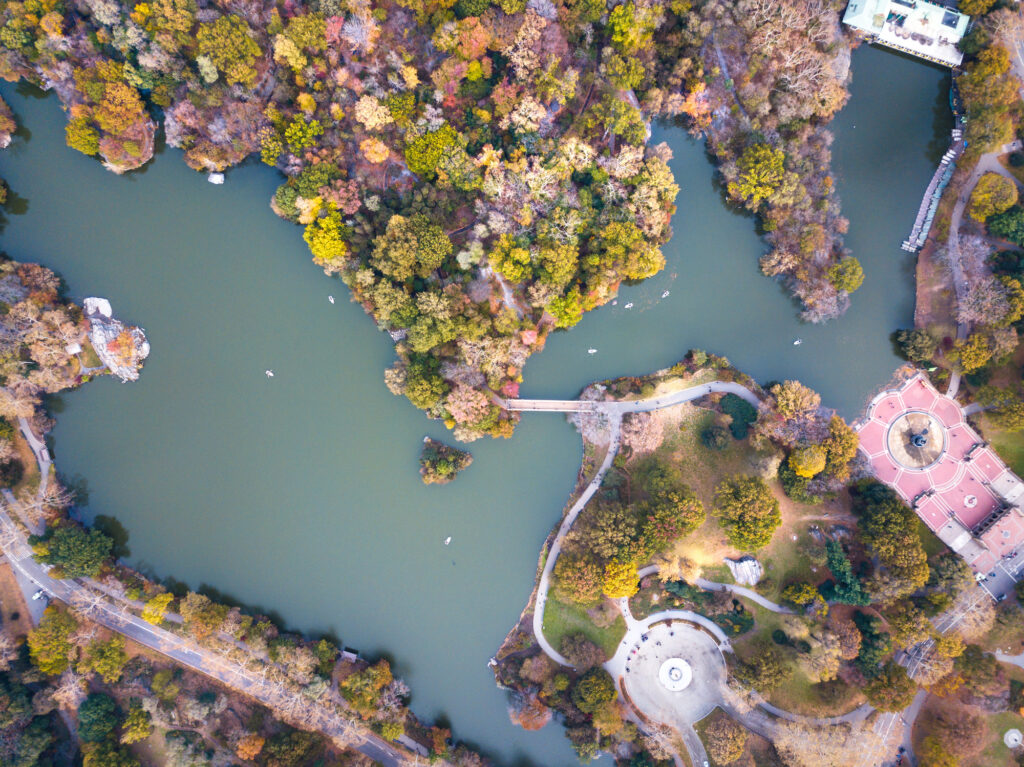And how it may apply to your project.
Every landscape architect will have their own unique description of what they do. From historical preservation, to golf course design, commercial projects, residential, and property management, landscape architects are involved. The field of landscape architecture overlaps many studies including ecology, engineering, architecture, sociology, horticulture, soil sciences, graphic communication and art, to name a few. Fredrick Law Olmstead is considered the father of American landscape architecture and pioneered the field in the late nineteenth century.
One of Fredrick Law Olmstead greatest works was Central Park in New York City. At 840 acres, Central Park is a true oasis in the middle of the city, a break from the hustle and bustle of city life. The trees provide shade from the sun on hot summer days. The pathways meander through scenic landscapes and frames views that inspire. This is a timeless masterpiece that keeps reinventing itself. Even though parts of the park were closed due to the pandemic, users were still able to walk through the park and experience the positive effect of nature.

Definition of a Landscape Architect:
From the ASLA: Landscape architecture involves the planning, design, management, and nurturing of the built and natural environments. With their unique skill set, landscape architects work to improve human and environmental health in all communities. They plan and design parks, campuses, streetscapes, trails, plazas, residences, and other projects that strengthen communities.
Illinois Title Law: Landscape architects are responsible for arranging outdoor spaces and objects to create a safe, efficient, healthful and aesthetically pleasing environment.
Colorado Code of Regulations: Landscape architects lead the planning, design, and stewardship of healthy, equitable, safe, and resilient environments.
The role of a landscape architect is to know what professional to turn to solve a complex problem in the landscape, knowing when to consult a civil engineer or architect. The difference between an engineered solution and one by a landscape architect – an engineered solution will be more of a mathematical, efficient solution, where the landscape architecture solution takes more of the character of the site as a whole into consideration.
Landscape architects are not substitutes for engineers, architects, and other scientists, but there is some overlap in the tasks a landscape architect performs, such as preparation of grading plans, design of decks, outdoor structures, and retaining walls. The landscape architects at MackLand focus on commercial landscape design plans.
Different states have different laws governing what landscape architects can do. One of the biggest challenges that one faces after going through the rigorous process of an accredited landscape architecture program and the following testing for licensure, is others claiming to be able to do the same without the same credentials.

Every landscape architect tends to develop their own niche in the field. Here at MackLand, we are swimming pool specialists. We remove old pools and install new ones. When we remove swimming pools, we make a great effort to restore the yard as much as possible to how it was prior to the pool. Taking into consideration character, grading, and soil profiles so that when we are completed with our project, you can not tell there was a pool there.
As a commitment to the sustainability of the swimming pool industry, we recommend hauling all of the old pool offsite. This is to make the area where the pool was as usable as possible. You never know when a future resident may want to put a pool back in.
During a pool removal, a lot of landscape problems can come up. Such as what to do next, figuring out hardscape issues, designing of a new patio and planting, and in general, how to utilize the new space.
When we install swimming pools, we design custom pools and hardscape to meet the needs of our clients with functional space, adding value and character to the area. Creating a backyard oasis that adds long lasting value to the property. One of our biggest assets is that our pool removal business has given us a unique perspective on what works and what doesn’t.
If you are looking for a landscape architect to help you with your next project, give us a call. We would love to work with you.





